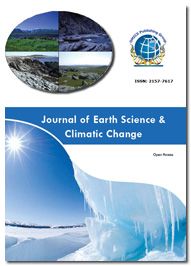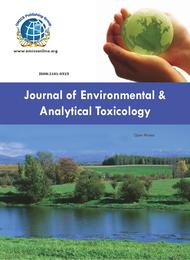Theme: Stop Pollution - Go green, Breath Clean
POLLUTION AND HEALTH 2020
Pollution and Health 2020, takes an immense pleasure to extend a warm welcome to invite all the participants across the world to attend our upcoming congress on 3rd Annual Congress on Environmental Pollution and Health during August 03-04, 2020 Hanoi, Vietnam. The deliberations for Pollution and Health 2020 will be on “Stop Pollution = Go Green, Breath Clean”.
Pollution and Climate change is the present most serious problem in the world. Due to rapid industrialization and urbanization, our environment is getting polluted and in turn effecting the surrounding ecosystem. If this is not properly addressed soon, our future generations will be facing devastating results in the form of natural disasters that costs the lives and health on planet earth. So, with the prime motto to bring awareness in the common people Pollution and Health 2020 is being organized every year. As well it brings the world class environmental professionals and policy makers to frame strategic action plans and policies to control and cease the enormous release of pollutants into the environment. Pollution and Health 2020 brings both the researchers and stakeholders on one platform to share and come with possible positive output. Pollution and Health 2020 is the best platform for professional development and networking opportunities. It is the best opportunity for the young researchers to meet the world class Scientists and Environmental Professionals.
This Pollution and Health 2020 is an amalgam of invited keynote Lectures, Scientific Sessions, Poster presentations, Workshops related to current scenario, issues and future challenges associated with Pollution control and public health sector.
We look forward to seeing you in Hanoi, Vietnam.
Track 1: Environmental Pollution
Environmental pollution is one of the most serious problems facing humanity and other life forms on our planet today. Environmental pollution can be defined as any harmful substance that is been introduced into the environment via air, water, soil etc. These harmful substances that cause pollution are termed as Pollutants. Due to excessive increase in the pollutants, normal environmental processes are adversely been affected. Depending on the nature of pollutants and subsequent pollution of environmental components, the pollution may be categorized as Air Pollution, Water Pollution, Soil/Land Pollution, Noise Pollution, Radioactive Pollution, and Thermal Pollution. Among these types of pollution, air pollution is the main type threatening the environment, humans, plants, animals, and all living organisms.
Sessional Keywords:
Conference series llc Ltd every year organizes related international Pollution Conferences | Pollution Control Conferences | Air pollution Conferences | Water Pollution Conferences | Global Warming Conferences | Climate Change Conferences | Environmental Conferences across the world.
Related Pollution Control Agencies | Pollution Control Societies | Pollution Control Boards | Pollution Control Associations are the major contributors in our Pollution Control conferences.
Track 2: Climate Change and Global Warming
Climate change can be defined as the change in the weather patterns of earth that lasts for few decades and sometimes may be for million years. Climate change is the trending and threatening issue of our time and if it is not addressed with immediate attention, then our planet earth should be ready to face severe catastrophic impacts in the future. Global warming is the defined as gradual rise in the average temperature of the Earth's atmosphere due to change in the climate. Primary reasons for the global warming are due to industrialization and urbanization especially CO2 emissions. Major consequences due to climate change and global warming are Sea Level Rise, Ocean warming, Glacial Retreat, Shrinking of Ice Sheets, Solar Irradiance, Depletion of Ozone Layer, Natural disasters and Droughts and Heat Waves.
Conference series every year organizes related international Pollution Conferences | Pollution Control Conferences | Air pollution Conferences | Water Pollution Conferences | Global Warming Conferences | Climate Change Conferences | Environmental Conferences across the world.
Related Pollution Control Agencies | Pollution Control Societies | Pollution Control Boards | Pollution Control Associations are the major contributors in our Pollution Control conferences
Track 3: Ocean and Climate change
Climate change is an adjustment in the factual conveyance of climate, Climate change may allude to an adjustment in normal climate conditions, or in the time variety of climate around longer-term normal conditions. Certain human exercises have additionally been recognized as significant causes of recent climate change, often referred to as global warming.
A Sea level rise is a rise in the water volume, leading to an increase in world Sea level. Sea level rise is typically attributed to Global Climate change by thermal expansion of the water within the oceans and by melting of Ice sheets and glaciers ashore. Sea surface temperature has been systematically higher throughout the past three decades. Sea level rise is primarily measured by tide stations and satellite laser altimeters. Sea level rise is caused primarily by two factors associated with Global warming, the thermal expansion of ocean water and from melting ice sheets and glaciers because it warms. Global Warming affects weather patterns as they pertain to cyclones.
Related: Pollution Control Conferences | Global Warming Conferences | Climate Change Conferences | Environmental Conferences | Natural Hazards and Disaster Management
Track 4: Pollution Analysis
Environmental Monitoring and Assessment discusses technical developments and data arising from environmental monitoring and assessment, principles in the design of monitoring systems, and the use of monitoring data in assessing the consequences of natural resource management and pollution risks.
Pollution Analysis can provide an important aid in the choice of the strategy to control the level of some hazardous elements. The difficulties in detecting polluting sources from experimental data are related not only to the adoption of suitable and systematic measuring procedure, but also to a correct management of the available information. From the theoretical point of view, the use of simplified models, coupled with classical regularization techniques, shows that, in general, the problem is badly posed and consequently, numerically ill-conditioned. Hence the possibility of using expert systems algorithms, introducing further qualitative information, improves the reliability of the solutions.
The problem is first solved using traditional procedures, showing that the distributed sources are not recognized. Afterwards, different results obtained from various algorithms derived from the assumed a-priori knowledge are examined. In this case, it is possible to obtain a more realistic situation of the pollution sources, inside the boundaries of the controlled area.
Related: Pollution Control Conferences | Global Warming Conferences | Climate Change Conferences | Environmental Conferences | Natural Hazards and Disaster Management
Track 5: Environmental Protection
In recent decades, many environmental problems have increased as the result of human activities and unplanned management of the technological development those interference ecosystems.
The term "environmental protection" can be defined as the prevention to conserve and preserve the standard healthy level of environmental media by reducing the production of pollutants or polluting substances in environmental media. Various human activities have induce many undesirable effects to the environment which can be threatening human health, economic, natural resources and gene pool of ecosystems such as pollutions, greenhouse effect, global warming and soil erosion. Therefore, the environment should be protected for a better life in future.
Related: Pollution Control Conferences | Global Warming Conferences | Climate Change Conferences | Environmental Conferences | Natural Hazards and Disaster Management
Track 6: Pollution Ecology & Toxicology
Pollution is the effect of undesirable changes in our environment that have harmful effects on all living Organisms. During the last few decades we have polluted our environment on which life itself depends with a variety of waste products.
Toxicology is the study of chemical or physical agents that produce adverse responses in the biological systems with which they interact.
From an Ecological point of view, pollutants can be classified as Degradable or Non-persistent pollutants which can be rapidly broken down by natural process. E.g. domestic sewage, discarded vegetables etc., Slowly-degradable or Persistent pollutants are pollutants that remain in the environment for many years in an unchanged condition and take decades or longer to degrade. e.g. DDT(pesticides) and most plastics. Non-degradable pollutants cannot be degraded by natural processes. Once they are released into the environment they are difficult to eradicate and continue to accumulate.eg: toxic elements like lead or mercury and nuclear wastes.
Related: Pollution Control Conferences | Global Warming Conferences | Climate Change Conferences | Environmental Conferences | Natural Hazards and Disaster Management
Track 7: Human Impact on the Environment
Human impact on environment in several ways, some common effects include water quality, environmental pollution and greenhouse gas emissions, depletion of natural resources and contribution to climate change. Some of these are the direct result of human activities, whereas others are secondary effects that are part of a series of actions and reactions. Though, technology is making lives of humans easier and comfortable. It poses a great threat to the environment. The threat is due to pollution, radiation hazards, exploitation of natural resources etc. Greenhouse gases and aerosols affect climate by altering incoming solar radiation and out-going infrared (thermal) radiation that are part of Earth’s energy balance. Changing the atmospheric abundance or properties of these gases and particles can lead to a warming or cooling of the climate system.
Related: Pollution Control Conferences | Global Warming Conferences | Climate Change Conferences | Environmental Conferences | Natural Hazards and Disaster Management
Track 8: Environmental Sustainability and Development
Environmental sustainability is defined as responsible interaction with the environment to avoid depletion or Environment degradation of natural resources and allow for long-term environmental quality. The practice of environmental sustainability helps to ensure that the needs of today's population are met without jeopardizing the ability of future generations to meet their needs. The three pillars of sustainability are Economic development, Social development and Environmental protection.
Environmental Performance Index (EPI) is one of the most widely used measures of well-being. The weak point of this index is that it does not take into account the concept of sustainability and, more precisely, it is lacking in the environmental component specification. On the other side of the spectrum, some indicators provide useful information about the environmental health of countries but not about Human development, such as the Environmental Performance Index (EPI).
Related: Pollution Control Conferences | Global Warming Conferences | Climate Change Conferences | Environmental Conferences | Natural Hazards and Disaster Management
Track 9: Pollution Solutions
The control of the emission of various contaminants into the environment which brings down the level of the pollution is done by various updated methods. The various technologies which control the pollution are Bioremediation laser methods, chemical methods, nanotechnology etc. Phytoremediation is a way to mitigate environment pollutions, such as in air, water and soil pollution in virtue of plants, more often than not, combined with their associated microorganisms. This concept has been widely applied to treat pollutants in soil and water. Vapor recovery is the process of recovering the vapors of gasoline or other fuels, so that they do not escape into the atmosphere.
Related: Pollution Control Conferences | Global Warming Conferences | Climate Change Conferences | Environmental Conferences | Natural Hazards and Disaster Management
Track 10: Recycling & Waste Management
The increasing trend in Recycling and waste management has increased. Recycling is a way of life. Once we have made that choice to implement all the steps of recycling in our daily lives, and stick to that choice every single day, recycling becomes second nature to us. Sure there will be lapses; it’s not easy for us creatures of habit. But no matter, we press on. Every small contribution to the recycling movement and the initiative to protect our environment adds up to how our present society eventually shapes our nation’s and the Earth’s future. Waste management or Waste disposal is all the activities and actions required to manage waste from its inception to its final disposal. Very one of us has an important role to play in reducing the quantity of waste buried in landfills. Sorting waste in order to recycle or compost it are efficient means to reduce garbage.
Related: Pollution Control Conferences | Global Warming Conferences | Climate Change Conferences | Environmental Conferences | Natural Hazards and Disaster Management
Track 11: Bioenergy and Biofuels
Bioenergy is the single largest Renewable energy source today, providing 10% of world primary energy supply. It plays a crucial role in many developing countries, where it provides basic energy for cooking and space heating, but often at the price of severe health and environmental impacts. The deployment of advanced biomass cook stoves, clean fuels and additional off-grid biomass electricity supply in developing countries are key measures to improve the current situation and achieve universal access to clean energy facilities by 2030.
Biofuels are produced from living organisms or from metabolic by-products (organic or food waste products). In order to be considered a biofuel the fuel must contain over 80 percent renewable materials. Bio-hydrogen may be a potential biofuel available from each cultivation and from waste organic materials. Although element is created from non-renewable technologies like steam reformation of gas, rock oil processing and chemical change of coal, chlorophyte and cyanobacteria supply another route to renewable H2 production. Steam reforming of methane made by anaerobic digestion of organic waste is often used for bio-hydrogen also. Bio-plastics are any plastic material that's either bio based, perishable, or options both properties. They’re derived from renewable biomass sources, like vegetable fats and oils, corn starch, or micro-biota. Organic phenomenon is that the production of electrical potentials and currents within/by living organisms. Bioelectric potentials area unit generated by a range of biological processes and customarily zero in strength from one to some hundred millivolts.
Related: Pollution Control Conferences | Global Warming Conferences | Climate Change Conferences | Environmental Conferences | Natural Hazards and Disaster Management
Track 12: Risk assessment
Risk assessment is the determination of quantitative or qualitative estimate of risk related to a well-defined situation and a recognized threat (also called hazard). Quantitative risk assessment requires calculations of two components of risk (R): the magnitude of the potential loss (L), and the probability (p) that the loss will occur. An acceptable risk is a risk that is understood and tolerated usually because the cost or difficulty of implementing an effective countermeasure for the associated vulnerability exceeds the expectation of loss. "Health risk assessment" includes variations, such as risk as the type and severity of response, with or without a probabilistic context.
In all types of engineering of complex systems sophisticated risk assessments are often made within safety engineering and reliability engineering when it concerns threats to life, environment or machine functioning. The nuclear, aerospace, oil, rail and military industries have a long history of dealing with risk assessment. Also, medical, hospital, social service and food industries control risks and perform risk assessments on a continual basis. Methods for assessment of risk may differ between industries and whether it pertains to general financial decisions or environmental, ecological, or public health risk assessment.
Related: Pollution Control Conferences | Global Warming Conferences | Climate Change Conferences | Environmental Conferences | Natural Hazards and Disaster Management
Global presence of your research at Pollution and Health 2020 scheduled during August 03-04, 2020 @ Hanoi, Vietnam.
Market Analysis
The global air pollution control systems market size is expected to be valued at USD 98.17 billion by 2025, per a new report by Grand View Research, Inc., registering a 5.0% CAGR during the forecast period. Rampant gas emissions from mining and construction sectors are projected to boost market growth.
So as to actualize compelling and productive arrangements and mediations, the requirement for understanding the causes and levels of air contamination is rising. Subsequently, air quality checking is being performed utilizing enormous, costly, and modern logical instruments that are for all time introduced and expertly kept up. The mechanically driven arrangements have been improving the air contamination control. This is probably going to support the development of the worldwide air contamination control showcase during the figure time frame.
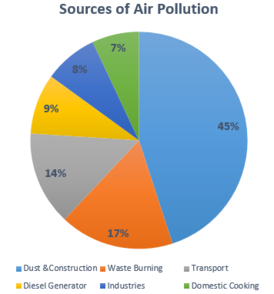
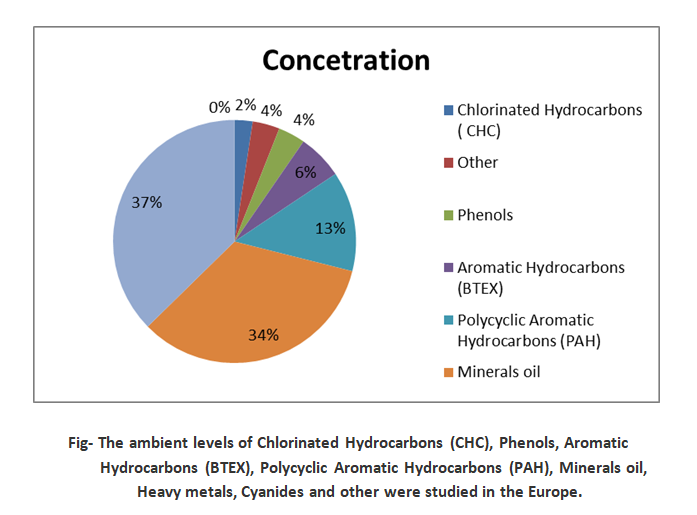
The Pollution levels according to measurements drawn from various sources and contaminations for air, Drinking Water Pollution and Inaccessibility, Noise and Light, Water 28.36%, 10.04%, 38.68%, 21.24% individually.
Particles with a 50% distance across of 10 µm BS, SO2, NO2 and CO are likewise considered. This may somewhat be because of a superior exactness of relative hazard (RR) gauges for the passing’s in these age gatherings. Altogether different poisons like CO, SO2, BS would be answerable for various issue. gauges for passing’s between 45–65 years would in general be littler than those in >60 years, except for ozone; for cardiovascular mortality the RR for PM10, O3 and CO were comparable in these age gatherings.
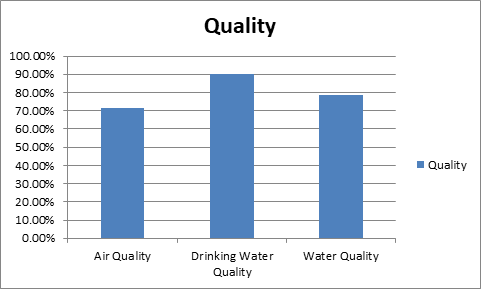
Target Audience:
· Pollution Control Associations
· Directors, CEO’s of Organizations
· Chemical Engineers
· Environmental Academia’s
· Business Development Managers
· Chief Scientific Officers
· Climate Change Researchers
· Professors, Associate Professors, Assistant Professors
· PhD Scholars
· Investment Analysts
· Pollution Control and Health Hazards Professionals
· Supply Chain companies
· Manufacturing Companies
· CRO and DATA management Companies
· Business Entrepreneurs
Related Companies/industries:
· Anguil Environmental Systems
· World Health Organization
· CECO Environmental
· Air-Tech Pollution Control Systems
· Premium. Tri-Mer Air Pollution Control Systems
· Chemisch Thermische Prozesstechnik GmbH / CTP Air Pollution Control
Conference Highlights
- Environmental Pollution
- Climate change and Global warming
- Pollution Control
- Pollution Analysis
- Pollution Sources & Effects
- Pollution Ecology & Toxicology
- Environmental Sustainability and Development
- Plastic Pollution
- Industrial pollution
- Human Impact on the Environment
- Bioenergy and Biofuels
- Risk Assessment
- Air Pollution Control Equipment Market Trends
- Environmental Protection
- Resource Depletion
- Acid Rain
To share your views and research, please click here to register for the Conference.
To Collaborate Scientific Professionals around the World
| Conference Date | August 03-04-2020 | ||
| Sponsors & Exhibitors |
|
||
| Speaker Opportunity Closed | |||
| Poster Opportunity Closed | Click Here to View | ||
Useful Links
Special Issues
All accepted abstracts will be published in respective Our International Journals.
- Environment Pollution and Climate Change
- Journal of Environmental & Analytical Toxicology
- Journal of Earth Science & Climatic Change
Abstracts will be provided with Digital Object Identifier by




